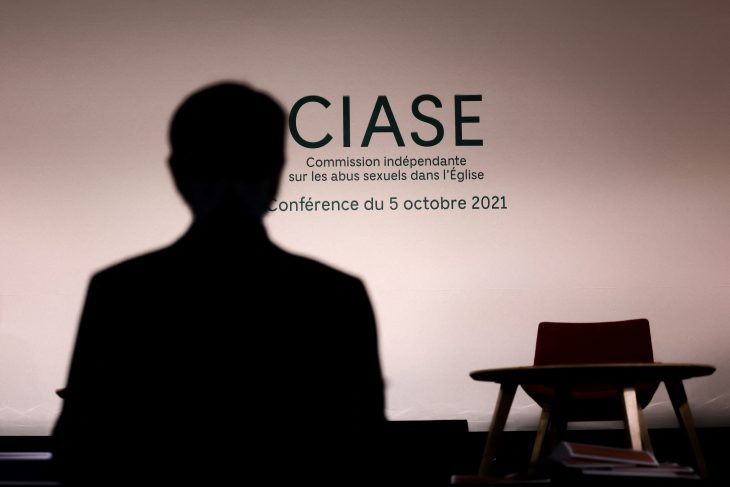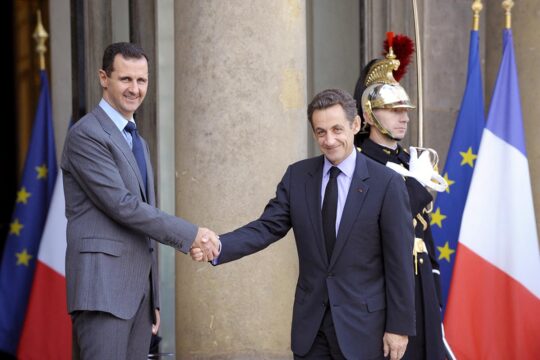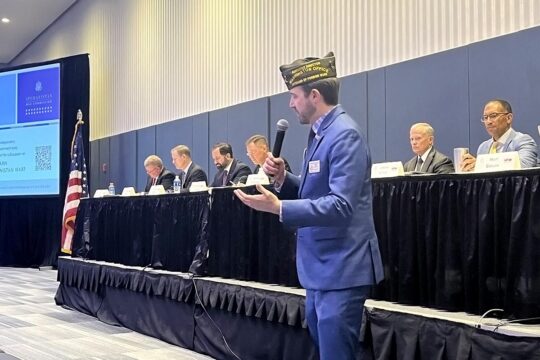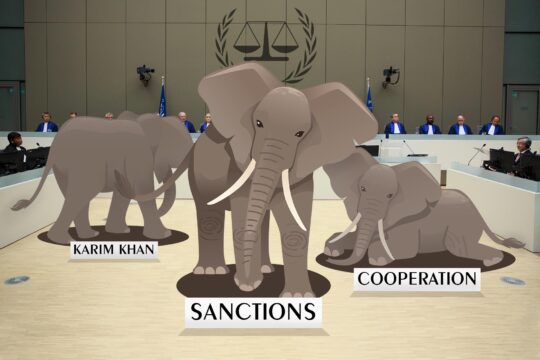JUSTICEINFO.NET: In what way can we say that this Commission on sexual abuse in the Church of France (CIASE) is part of transitional justice?
XAVIER PHILIPPE: I think we need to distinguish two aspects: transitional justice itself, a post-conflict justice that focuses on serious and massive violations of fundamental human rights after a conflict in a State in transition; and the mechanisms used by this justice, which are ultimately quite similar to those used by CIASE. Indeed, if we decode the speech of its president when he handed over the report on October 5, we can clearly see the five pillars of transitional justice.
First, there’s the search for the truth, which must take place from the outset because everything else stems from this, particularly the testimonies that allow us to have a perception of the extent of the phenomenon.
Secondly, reparation. I usually say that these should be not just sums (of money) but also words that constitute an acknowledgement of responsibility. We find this aspect in the speech of the President [of CIASE] Jean-Marc Sauvé: these reparations must not be limited to the attribution of money, they must be accompanied by words, by the recognition of a status for the victims.
Third, there is the pillar of accountability. Transitional justice obviously seeks to identify individual responsibilities, but it also tries to understand in what way the Church was a vector of transmission of this violence and did nothing to stop it. It even covered up acts that it knew were criminally reprehensible. We are therefore faced with a double responsibility, individual and institutional, which is characteristic of transitional justice. Indeed, these mechanisms make it possible to establish the link between this violence committed on a large scale and the institutions that allowed it to happen.
The fourth pillar is the guarantee of non-repetition. This idea is based on the fact that the causes must be removed to prevent recurrence. And that starts with targeting the abusive priests. The Commission spoke with eleven of them. It does not use the word "sanctions" but, reading through the lines, it considers that these people must be removed from the positions they hold. It is the same idea when civil servants who collaborated with the former regime are removed from their functions.
I would add a fifth pillar, that of reconciliation, which is a longer-term process. It takes more time, aiming for deep structural reforms to enable the reconstruction of society and the establishment of a new contract of trust. CIASE is largely part of this perspective.
Going through the report quickly the day after it was submitted, I would consider that the mechanisms of CIASE are quite similar to those of a Truth, Justice and Reconciliation Commission. I am not sure that President Sauvé was directly inspired by this model but some members of the Commission were familiar with this form of justice. And they went a long way: they qualified the sexual violence and provided some ideas for reflection.
One specificity is nevertheless that this Commission was commissioned by the Conference of Bishops of France and the Conference of Religious Orders of France, i.e. by the Church itself.
This is interesting! This may shock at first, but the analysis must be more subtle. The Church could have limited itself to an internal investigation, but it gave a public character to the initiative of setting up this Commission, and made it transparent in several respects, notably through the independence conferred on its president to set it up and make it function.
It should also be stressed that the final report was published, which was not expected at the outset, and this allowed the entire process to be widely publicized. This transparency was evident right to the end with the report being broadcast live in the media.
Looking at the transitional justice aspect without having analysed the report content in detail, it seems to me that the Commission has really taken power over the Church by exercising its mission in complete independence and by playing the transparency card.
How does the nature of the crime looked at by this Commission, sexual violence committed within the Church, make it a specific case?
In the testimonies of truth and reconciliation commissions - I am thinking of the commissions of Canada or South Africa, which I followed between 1996 and 1998 - we decipher the structural nature of the violence committed in a society that has been torn apart by conflict. Then the goal is to rebuild a new state through the adoption of a new constitution, new institutions, etc. This is obviously not the situation covered by CIASE. But it did have to deal with systemic and endemic violence, covered up by the Catholic Church, which had no desire to be in the media spotlight, let alone in the courts. While the Church obviously never encouraged or ordered the commission of such violence, its vertical and horizontal mode of operation allowed this violence to take place and to continue. And this sexual violence, perpetrated by clerics of the Church or lay people working for the Church, was made possible by this mode of operation and this absence of hierarchical control.
We are therefore confronted with this debate: what is the exact share of responsibility attributable to the institution in the commission of this sexual violence? Reading the reports of the hearings gives the feeling that there was a form of oppression and domination by a system over children who have never been able to count on the institution to support them. The fact that the institution did not want to act strongly to end these abuses makes it partially responsible for the situation.
At a seminar organized by the Institut francophone pour la justice et la démocratie (IFJD) on February 5, 2021, Jean-Marc Sauvé said: "There is something vast in what has happened, a real enterprise of destruction. If I dared, I would say that there is in this multitude of acts -- concerted or not, separate but not isolated from each other, carried out in silence and in a global manner, consciously or not – a whiff of a crime against humanity." Does this go too far?
I don't think so, because the notion of crime against humanity really arises in this context. There are of course certain limits to such a statement from a legal point of view, but conceptually, one can really ask the question.
A crime against humanity is, according to Article 7 of the Statute of the International Criminal Court, "a systematic or widespread attack against any civilian population committed with knowledge of the attack". Can we speak of a systematic or widespread attack in the case of sexual crimes in the Church? This may be a matter of debate, depending on what one means by systematic or widespread attack. However, the rest of Article 7 states that "repeated persecutions" may constitute such an attack. This refers to acts directed against a particular category of persons, and which are repeated. It can therefore correspond to isolated cases that are repeated, even if they are not daily. The systematic or generalized attack may be latent, but continuous. Therefore, the repeated sexual abuse of minors with the knowledge that it is a criminal act could fit the definition of a systematic attack.
The definition says that the attack can be "against any civilian population": the use of an indefinite, singular pronoun encompasses a particular group, which in this case could be children. Finally, the last part of the definition implies that the criminal act is "committed with knowledge of this attack". This means that you know what you are doing by committing such a criminal act and the consequences of your act on the group you are targeting.
So I am not sure that, legally, the elements of the criminal offence itself are present -- not least because the attack is not the result of a concerted and conscious policy. But the conceptual idea behind the crime against humanity is there.
What is most astounding about these crimes is that the Church advocates, through its doctrine, the opposite values of what happened, and that the institution did not react to the abuse of its values.
If we were to qualify such crimes as crimes against humanity, the interest would lie in the fact that there would be no statute of limitations on them. That would completely change the picture.
Do you think this commission was the best mechanism to adopt on this issue?
I think that this form of justice makes it possible to achieve what judicial justice cannot or can no longer achieve. It is not a form of justice that tries to replace or contradict judicial justice, but rather it claims to be something else. I think the main idea is that transitional justice is "victim-centred": we are much more interested in the victim than in the perpetrator.
Transitional justice seeks to respond to the needs of victims. This is its foundation. For the State, ideal justice is punishment of the perpetrator who has violated its rules. By inverting this and putting the victim at the centre of the reflection, we switch to another logic. And such is the logic that CIASE seems to me to have applied. It took courage, a lot of courage and composure, and I am not sure [its members] will come out of this psychologically unscathed. But they did it and we must give them credit for that.
Transitional justice is not a concept that was invented and theorized before it was implemented. It is a process, a set of mechanisms, born of an empirical analysis of very diverse situations that have evolved continuously. Many of them that I have observed did not know where to start and did not know where to go! But they built themselves and gave birth to a new form of justice. CIASE has taken this path and has built itself over the course of its existence. The report it has produced seems to me to be particularly accomplished and to correspond with other transitional justice experiences.

Xavier Philippe, Law professor at the University of Paris-1 Sorbonne and the University of Aix-Marseille, France.







